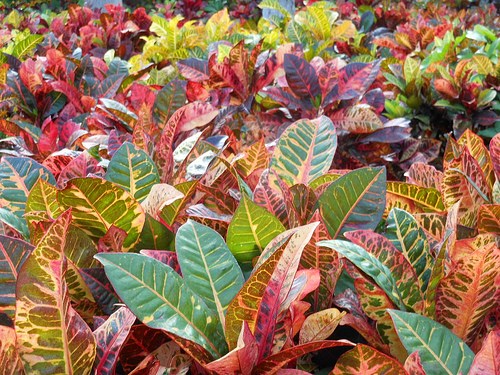Why Are So Many Tropical Leaves Colorful
Gardening Question from Piper:
We were vacationing in Maui, which as you know, is quite lush. While I didn’t make it to the Iao Valley (apparently the 2nd rainiest place on earth), I was able to enjoy the foliage in and around our hotel. I was struck by the color and pattern in the leaves (co-evolution with the birds?). Obviously, it’s understandable for a flower to be colorful as its motivation is to be pollinated, but why would the leaves contain so many bright colors other than green?

Answer From Pat:
Re: colors on tropical leaves—sometimes with the addition of waxy foliage: This is due to a genetic mutation. Over millennia, evolution “chose” these plants over the same plants with greener foliage because they were healthier, whereas the greener ones gradually died out. In greenhouses red foliage can sometimes come from mutations that might actually begin with a disease but in hot rainy environments red, orange and purple foliage may be a protective mechanism. Bright fall colors, for example, come about for the same reason, to protect the tree as the weather changes.
Most gardeners understand that green pigments in leaves are caused by chlorophyl that turns light into energy through photosynthesis. Lack of it indicates that the plant can survive with less of the energy of the sun in the environment in which it lives or else photosynthesis continues despite the lack of green. Perhaps green leaves on some species of plants in a hot wet place like Hawaii would be more delicate and more easily damaged. Also, it could be that pests, diseases and animals that are strongly attracted by light green leaves are warded off by bright pigments, just as some poisonous insects are brightly colored to warn predators not to eat them. But the main scientific reason for red and colorful leaves is that red plants contain more anthocyanins. Chlorophyl is still present and at work, but anthocyanins are thought to protect the plant from diseases. The exact way this works is not fully understood, but personally I think the prevalence of anthocyanins in a plant provides strong protection from fungus diseases, moulds and and rot which would otherwise be rife in a warm, wet place like Hawaii.


